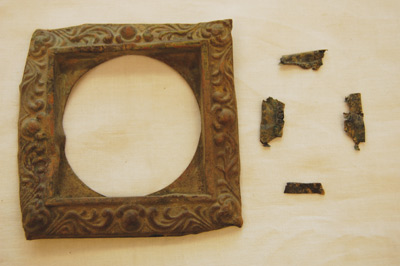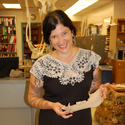Digging Jacksonville – October 2014
Over the past few years, you could barely throw a rock without hitting a shovel-wielding, orange vested archaeologist in downtown Jacksonville. Many of the same factors that served to preserve the beautiful buildings that make up our National Historic Landmark, also protected the significant archaeological resources beneath our streets, sidewalks, and homes. While we can appreciate the town’s nineteenth-century past through our highly-valued historic buildings, archaeology can tell the story of those who once lived within them, whose businesses thrived and failed, who made the political choices, and did the backbreaking labor, that left us with the town and region we enjoy today.
As archaeologists, we are uniquely skilled at translating these stories—taking even the most mundane of items, and turning them into the rich tales of the individuals, places and events that shaped not just Jacksonville, but Oregon, and the American West. In an effort to share these stories (as they are literally uncovered) with the Jacksonville community, the staff and students of the Southern Oregon University Laboratory of Anthropology, or SOULA, are excited for the opportunity to highlight a favorite artifact or two each month here in the Review.
To start-off the series, we chose two artifacts that aren’t very exciting at face value, but underscore the creative legacy of Jacksonville through famed resident Peter Britt. These two picture frames were each found in recent excavations in town: the larger frame was found within the burned building in the Chinese Quarter excavated last October, and the fragmented picture frame was found during excavations within the Britt Festival grounds this summer.
Given Peter Britt’s impact on the region, as pioneer photographer, agricultural innovator, and general man-about-town, the fact that the streets are quite literally lined with the tools of his trade is not too surprising. Peter Britt brought camera equipment with him to Jacksonville in 1852, and continued to document the region and its people until his death in 1905. While his early photographs of Crater Lake are often touted as his most notable accomplishment, as a scholar, I think his portraits of early Jacksonville residents were his most important. The picture frame recovered from within the Chinese house on Main Street highlights that, unlike many other photographers of his day, Britt was not just taking photographs of the Chinese, but for them. An important distinction when trying to understand what life was like for the poorly-documented, and highly discriminated against, early Chinese population in Jacksonville.
The other picture frame was found in the vicinity of the new Performance Garden stage inside the Britt Festival grounds. Over the years and across the area once home to the Britt family, we unearthed paint brushes, paints, glass plate negatives, and photography supplies in our excavations across the site. While we are still puzzling out ‘what it all means’ in the larger sense, I can tell you right now that next time you enjoy a summertime concert on the Britt hill, you are quite literally sitting on top of more than a centuries’ worth of creativity.
Thank you to ODOT, the City of Jacksonville and Britt Festival for underwriting the expenses for this dig.

 Chelsea Rose is an historical archaeologist who specializes in the settlement and development of the American West. Chelsea and the Southern Oregon University Laboratory of Anthropology (SOULA) conduct archaeology across Oregon and have done several projects in Jacksonville. You can reach Chelsea at rosec@sou.edu and follow SOULA on
Chelsea Rose is an historical archaeologist who specializes in the settlement and development of the American West. Chelsea and the Southern Oregon University Laboratory of Anthropology (SOULA) conduct archaeology across Oregon and have done several projects in Jacksonville. You can reach Chelsea at rosec@sou.edu and follow SOULA on